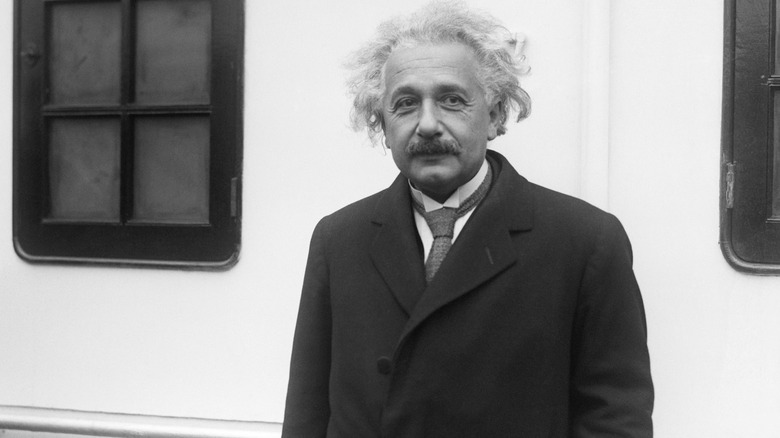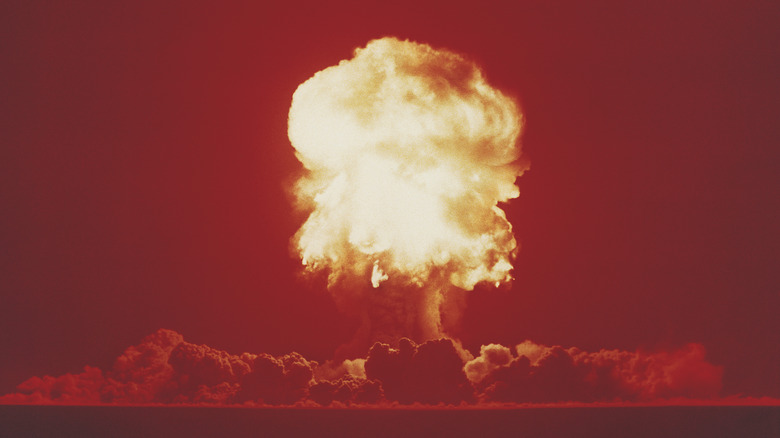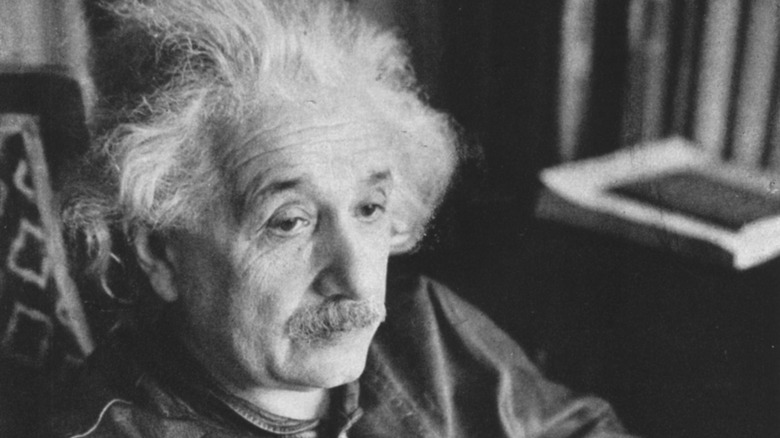This Is How Einstein Predicted The End Of The World
Even folks who don't know a thing about the specifics of Albert Einstein's work in theoretical physics at least know, "Hey, that guy was pretty smart, right?" Yes, indeed. Not only was Einstein an intellectual titan, he was a person of wisdom, humility, and sensitivity. As Huffington Post quotes him in a 1940 letter, "I do not share the crusading spirit of the professional atheist. I prefer an attitude of humility corresponding to the weakness of our intellectual understanding of nature and of our own being." In other words, Einstein held insights not only into the realm of the physical and mathematical, but the human heart. This is why he rightfully feared for the future of our species.
A year before he wrote the above words he'd urged U.S. President Franklin D. Roosevelt to hasten work on the atomic bomb. Einstein later described this move as his "one great mistake." After World War II was over, he advised caution, saying in his 1945 Nobel Prize speech, "The war is won, but peace is not." And while Einstein himself didn't partake in the J. Robert Oppenheimer-led Manhattan Project that developed the atomic bomb, the scientific community of the time was very intertwined. Einstein felt some measure of personal responsibility to warn humanity about its impending obliteration, provided it didn't pursue extreme caution regarding its use of nuclear weaponry. Specifically, Einstein believed the H-bomb — the most powerful type of atomic bomb possible — spelled doom for Earth.
The doom of the H-bomb
For those unfamiliar with the ins and outs of nuclear weaponry, there are actually multiple types of nuclear weapons. The atomic bomb was the original bomb designed and dropped in 1945 during World War II onto the Japanese cities of Hiroshima. An atomic bomb splits atoms using a combination of plutonium or uranium combined with conventional explosives, a process referred to as nuclear fission. Albert Einstein, however, worried more about hydrogen bombs (H-bombs), thermonuclear devices that combine nuclear fission with fusion. They split, then recombine atoms to magnify their explosive yields and greatly outstrip the power of atomic bombs.
Einstein's fears were founded, as the most powerful nuclear weapon ever made was indeed a hydrogen bomb dropped in 1961. Dubbed the Tsar Bomba and built by the Soviet Union, its outrageous explosive power was 1,570 times more powerful than both the Hiroshima and Nagasaki bombs combined. The United States had already dropped the world's first hydrogen bomb in 1952 after U.S. President Harry Truman recruited some of the scientists from the Manhattan Project to start development on the bomb in 1950.
That happened five years after Einstein's aforementioned 1945 warning about developing further nuclear weaponry. But like so many wise words, his warning went unheeded. In the face of fresh, post World War II fears and the equally fresh memory of World War II's bloodshed, the world's superpowers marched ahead with creating a weapon that dwarfed the atomic bomb in size and destructive power.
The warning in the Russell-Einstein Manifesto
Ten years after Albert Einstein won his Nobel Prize in 1945, he joined forces with one of the 20th century's most preeminent philosophers and thinkers, Bertrand Russell, to warn about the dangers of hydrogen bombs. The Russell-Einstein Manifesto, readable in full on Pugwash, was signed by a number of other leading physicists and mathematicians and delivered in London in 1955.
The manifesto's final paragraph acts as a perfect summary: "In view of the fact that in any future world war nuclear weapons will certainly be employed, and that such weapons threaten the continued existence of mankind, we urge the governments of the world to realize, and to acknowledge publicly, that their purpose cannot be furthered by a world war, and we urge them, consequently, to find peaceful means for the settlement of all matters of dispute between them." The simple choice, as Einstein and Russell wrote, was between "continual progress in happiness, knowledge, and wisdom" — and death.
Specifically, Einstein and company pointed to the power of the H-bomb above all others as powerful enough to "quite possibly put an end to the human race." The comparatively small amount of people who died from hydrogen weaponry's initial blast would pale in comparison to the much larger numbers who died the "slow torture of disease and disintegration" afterward. While no nuclear weapons have been dropped on people since World War II and the threat of the Cold War has long passed — Einstein's words continue to ring true.


